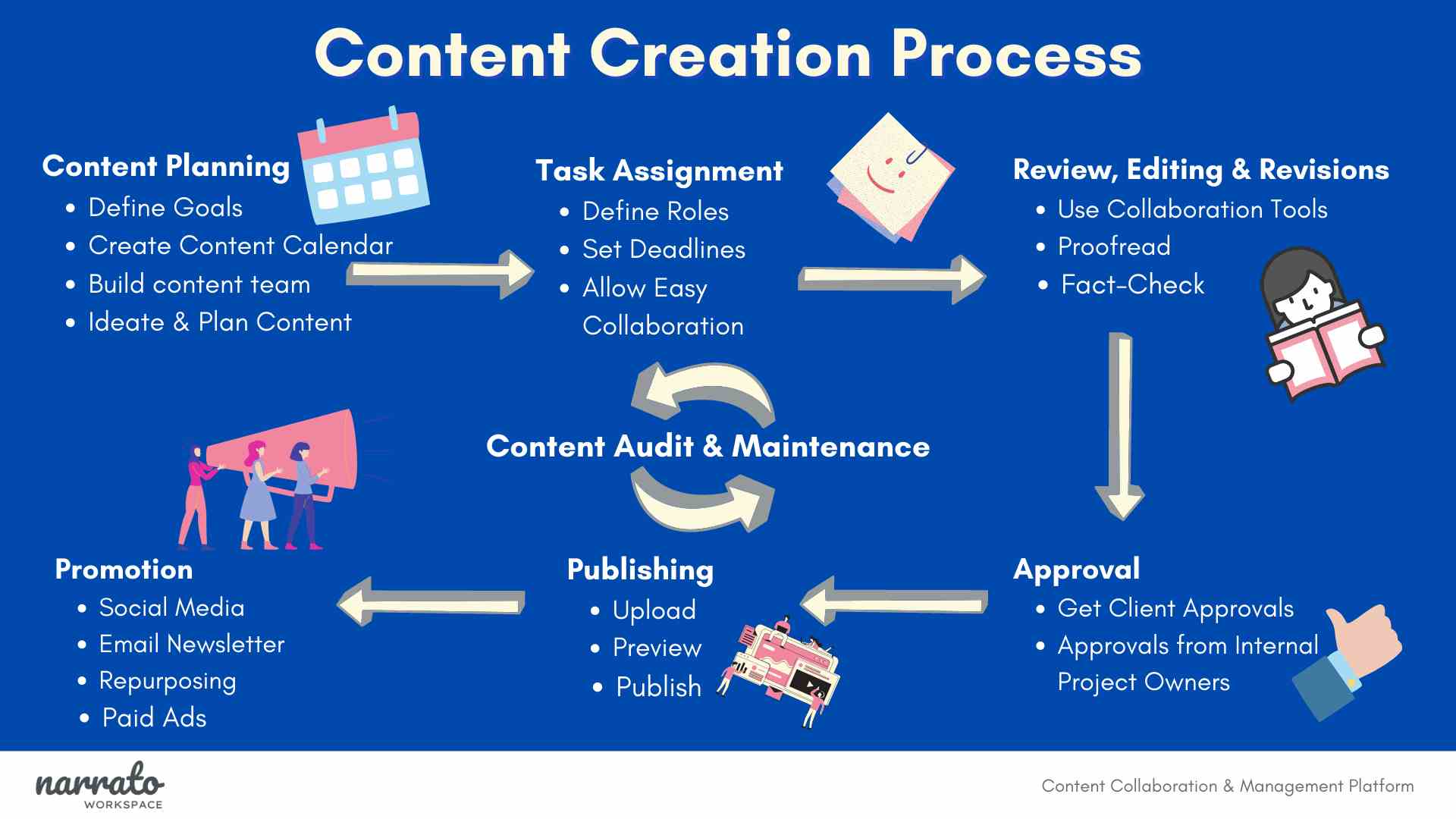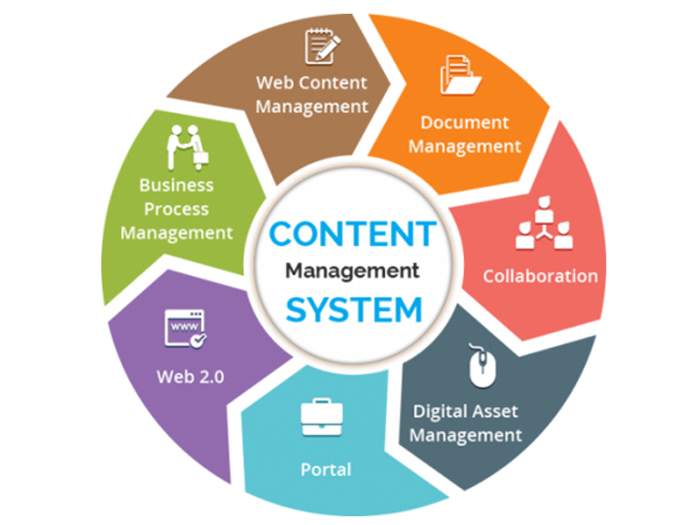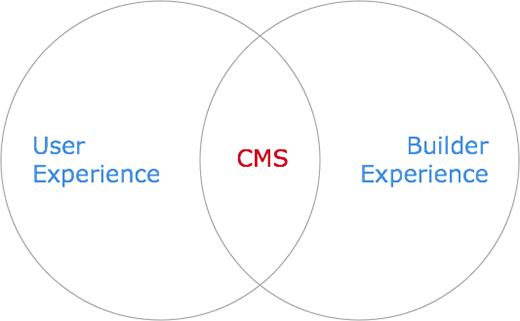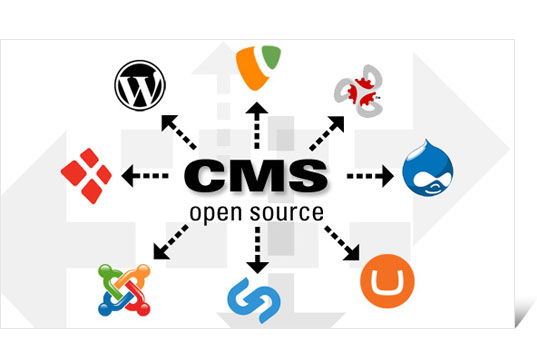CMS (Content Management Systems) is in the first group of choices when building and operating a website.
As the name suggests, this is a system that manages content. The introduction of a tool called CMS has made the management of a website, which has traditionally been a specialized and individualized task, a common task that anyone can handle, which is a huge breakthrough.
In addition to simply improving operational efficiency and reducing costs, we also provide services such as securing content, improving the value of the website through immediate response, timely SEO measures, CRM (Customer Relationship Management), MA (Marketing Automation), etc. As a tool for improving customer service through collaboration with other companies, there is a growing demand for a higher level of performance.
However, when it comes to introducing a CMS, where should you start? What is the best choice? It is not uncommon for people to worry at the initial stage.
Additionally, once a CMS is introduced, the direction of website management is determined by the characteristics of that CMS, and it may be difficult to change direction midway through.
Therefore, in this article, we will examine the structure of CMS, the advantages and disadvantages of introducing it in companies, and the specific types of CMS, in order to help you select and utilize a CMS that suits your company’s position and purpose.
Understand how CMS works
As mentioned in the introduction,
CMS
is a content management system.
Let’s understand CMS by looking at how it is generally structured.

Comparison with static content
○Differences from HTML files
Websites are usually created using a language called HTML (Hyper Text Markup Language) and a combination of images and video files.
It is composed and created by people who play many roles: designers who design the overall image and layout, coders who transcribe (code) it into HTML language, system engineers who develop programs to link with other systems, and programmers. I’m going. On the other hand, in CMS, common parts of design, coding, and programming are turned into templates so that only the content can be created.
It is often composed of a language such as PHP or JAVA and a DB (Data Base), but many CMS are made with PHP.
In other words, when creating a website using HTML, it was necessary to create 100 static HTML files for 100 pages of content, but with a CMS, it is necessary to create a templated PHP file and the content registered in the DB. Depending on the data, 100 pages of content can be displayed dynamically.

Comparison with creation software
Even when creating a website using static HTML, it is possible to reduce the expertise and workload by using creation software.
A common way for companies to update their websites is to have a designer or coder create the initial launch, and then manage updates using simple software called a page builder.
Of course, it is possible to manage efficiently with this method, but when managing a huge amount of content, you will still be managing files equivalent to the number of pages, and you will not be able to process it by just loading the content data. , the convenience of a CMS that allows you to change the design of all pages by changing only the template is the winner.
Cloud type
When creating HTML, even if you use creation software, you can create it on your PC, save it, and then upload the static content to a server to make it public.
In the case of CMS, the display is performed by a dynamic program such as PHP or JAVA that is set on the server in advance, so there is no need to save the file on your PC, and you can input data directly to the DB on the server. A page is created.
Another feature of CMS is that it does not require specialized knowledge or specialized tools, as data input is done through a management screen with an interface that makes it as easy as possible.
It is also worth remembering that there are some CMSs, such as Movable Type, which will be described later, that use a dynamic mechanism to check the display of input data and publish it as static HTML (write it out to a file). .


Significance for companies to introduce it
Before introducing a CMS, it is important to first clarify the objectives of each company.
The most suitable CMS for a company will vary depending on factors such as the company’s position, website management policy, budget for CMS introduction, running costs during operation, and human resources available.
To help you make that decision, let’s summarize the advantages and disadvantages of implementing a CMS.
merit
○No knowledge or skills required
As mentioned earlier, CMS is a system in which a DB that records preprogrammed templates and content is set on the server, and the content is registered using the management screen.
Therefore, there is no need to create a new design or learn HTML and put it together. It becomes possible to manage a website without having to acquire the knowledge or skills of creating a website.
○Promotion of division of labor
By introducing a CMS, website management can become a part of general operations rather than a special department’s work.
As mentioned above, anyone can now manage a website because specialized knowledge and skills are no longer required. As a result, website management is no longer the preserve of systems departments or outsourcing companies, and the necessary departments can manage the necessary content at their own responsibility. For the company as a whole, it is possible to manage websites more efficiently by leveling out the waste that always has to go through a certain department and the unevenness of work being concentrated in one department.
○ Immediacy of content
Rather than having experts create static HTML files, CMS allows content to be created instantly as data is input, reducing the time it takes to publish.
Previously, it would have taken several days, or even weeks, to compile content, request a specialized department or outsourcing company, confirm it, and publish it, but now it can be published immediately.
Speeding up content updates is a very important element on the Internet, and achieving this can directly become a competitive advantage for business.
In addition, a website that is updated regularly will have a higher evaluation score in terms of SEO, which will lead to a higher ranking in search results.
○Ensure the total amount of content
The total amount of content plays a major role in evaluating a website. Having a certain amount of content, being well-organized, and covering all the necessary information not only provides useful information for users, but also increases the evaluation points for SEO, and is the same as immediacy. Positively impact search results.
With a CMS that allows you to easily create content, you can publish more content and improve the competitiveness of your website.
○Multi-device compatible
It is essential for modern websites to be responsive to mobile devices other than PCs, such as smartphones and tablets.
Depending on the content of the website and the user base, the majority of views may be on mobile devices. Our operational experience has shown that for BtoB sites, the ratio of PCs to mobiles is particularly large, often at a 50/50 ratio.
With CMS, templates are often optimized for multiple devices, so one big advantage is that you don’t have to go through the trouble of making them compatible.
○Easy renewal support
As mentioned earlier, CMS displays content stored in the DB via templates. In other words, if you modify the template, the change in display will be uniformly reflected on all content, regardless of the amount of content.
Not only can you change the main menu due to a change in the website structure, but you can also modify the template all at once for major design renewals. This makes it easy to change the image for each season or add temporary designs when a campaign is held, and it is possible to keep the website fresh and up-to-date, making it possible to improve the website within the company. The value has further improved.
○Do not become personal
By introducing a CMS, it becomes possible to systemize website management operations. Up until now, websites have been positioned as a kind of black box that could only be managed and updated by specific departments (information systems, some people in marketing) or outsourced companies, but with the introduction of CMS, it has been structured as a black box. Freed from humanization.
Operation is via the management screen with an easy-to-understand interface, so anyone can operate it without leaving a history of changes even if operated by the person in charge or another person, and there is no risk that the operation itself will have a negative impact on the site. Anyone can use it in their daily work, and it is easy to manage.
Additionally, as a cloud-based system where data is stored on a server, it is possible to break away from the limited management of a person in charge or a dedicated PC.
○Reducing management costs and burdens
While CMS requires a certain amount of cost when introduced, it can reduce daily operating costs and maintenance costs without relying on specialized departments or outsourcing companies. (Some CMS require a certain level of expertise, so please be careful when handling them.)
By allocating the surplus costs and free human resources to content enhancement and other tasks, more efficient and effective website management can be achieved.
Disadvantages
○High hurdles for introduction
When introducing a CMS, compared to HTML production, items such as designing a configuration after identifying common features, creating templates, building a DB, and developing a management program are required, so it takes time and effort at the time of introduction. , costs tend to increase.
If the amount of content you are aiming for is large, the running costs will be reduced, which will reduce the implementation cost, but if the amount of content is small, the cost may increase, and the initial cost and running cost will be reduced. It would be important to consider this after simulating it.
On the other hand, it is also possible to reduce implementation costs by using an existing CMS such as Word Press, which will be described later.
It can also be said that there are high hurdles for smooth operation, such as the need to educate and become familiar with CMS management methods.
○Slow display speed
Compared to websites that display static HTML, CMS that retrieve data from a database and display it dynamically tend to have slower display speeds.
Although the communication environment is improving day by day, it is important to be aware that users may experience stress if they are in an old environment or display a large amount of content.
On the other hand, with a type of CMS such as Movable Type that publishes dynamically registered content to a static file, there is no need to worry about this because the display speed is the same as static content.
Also, although it is true that it is slower than a static website built with HTML, there is no need to worry about it as there is no disadvantage in terms of attracting customers.
○Low degree of freedom in individual support
CMSs that uniformly display content using templates tend to have limitations in expression because they fit into a formula, and there is a tendency for there to be less freedom in how content is displayed.
In order to realize individual requests, customization is required, and it must be taken into consideration that development costs will be incurred each time.
Recently, there has been an increase in the selection of themes that allow you to freely change design templates, and the provision of templates that take even more detailed layout settings into account, giving you more freedom than ever before.
○Security concerns
With a CMS that manages websites through a management screen, a port for accessing the server’s content storage area is open, so security is theoretically lower than that of static content.
There are also risks, such as the CMS program itself having bugs, and existing CMSs that have a high market share, making them easy targets for attacks. It is necessary to take measures such as placing IP restrictions on access to the management screen and regularly applying patches (fixes that fix bugs) to the program.
Word Press, which has a large market share among CMSs, is often cited for its security vulnerabilities. It is an open source CMS whose internal programs are open to the world, and while it is said to have low scalability, ease of use, and low barriers to introduction, it is said to have a high risk environment as it is susceptible to attacks from outside. This is also true.
Choice that suits your purpose
It is necessary to strategically select a CMS that suits the company’s objectives and website management policy, considering the balance of the advantages and disadvantages that we have seen so far.
We recommend choosing a CMS that suits your company by comparing and considering factors such as implementation costs and running costs, amount of content, human resources and division of labor.
Changing purpose
○From content management to tools for increasing contact points with users
<br/> Traditionally, the main purpose was to publish necessary content in real time, and a CMS requirement was as long as there was a mechanism for updating content. was met.
In recent years, CMS has come to be seen as a tool for creating and displaying content according to user trends.
More advanced requirements are now being required, such as SEO optimization based on access trends, content display that changes based on user behavior analysis, and linkage with tools such as CRM, SFA, and MA.

What you can do with CMS
There is no need to make any big deal about CMS. In fact, CMSs are everywhere around us.
This is also a CMS, a CMS that is familiar to you
○Corporate site announcements and News
The top page of a corporate site always has an announcement and news section. Although it is sometimes created using static HTML, most of the content is managed and updated using a simple CMS.
You can easily update the notification by registering the title, text, image, link, etc. of the notification from the management screen.
○Blog site
<br/> A blog site that you often see. Most of these are also created using CMS.
It is also possible to display it in conjunction with a blog service, or set up a blog program on the server and use it as a design template similar to that of a website.
○Schedule management
Schedule management tools provided by Yahoo and Google are also a type of CMS.
You can also display it on your website using a widget (an app function that embeds a display).
This widget is also used to display weather forecasts, stock prices, etc.
○SNS
SNS (Social Networking Service) also utilizes the functions of CMS to transmit personal information. By registering content, images, videos, etc., you can send information and register comments on what you view.
It is important to create a company’s website with SNS in mind, such as by installing SNS buttons so that content can be posted (shared) on SNS.
○EC
The EC (Electronic Commerce) sites where we usually shop can also be said to be a collection of CMS.
Product management involves registering products, selling them, managing customers, and managing orders.
Some companies have built core systems to manage sales and systems that coordinate with delivery systems.
SEO measures
As mentioned earlier, CMS and SEO are closely related.
Utilizing a CMS to provide a considerable amount of content in real time with a sense of speed is effective as an SEO measure.
You can also use the CMS to manage titles, keywords, and descriptions, which are important for SEO optimization.
Updateability of content is also an important element in promoting SEO measures, but it can also be easily adapted to add additional functions and the structure of the website that is easy to get evaluations.

Cooperation with each tool
Nowadays, CMS is expected to play a role not only as a standalone management system, but also as a tool to increase contact with users by linking it with other systems.
○SNS
Especially in B to C business, the presence of SNS has become indispensable.
You can use a CMS to import SNS displays onto your website using widgets, and create pages that can be shared on SNS.
○CRM(Customer Relationship Management)
There are cases where e-commerce sites link CRM and CMS. Create content tailored to individual users based on user purchasing data. Additionally, when content is created using a CMS, it is possible to directly display notifications or send individual DMs.
○MA (Marketing Automation)
The huge amount of content created with CMS is displayed by matching it to user trends using MA. By registering the requirements for use in MA when registering content in the CMS, you can filter the content display and add actions to suit the user.
○DMP (Data Management Platform)
DMP stands for Data Management Platform. It uses user information and behavior analysis to place advertisements. Similar to CRM and MA, content created in CMS is automatically reflected in advertising based on the values obtained from DMP.
○API (Application Programming Interface)
API (Application Programming Interface) is a mechanism for linking with other applications. By using the API, data from core systems and inventory management can be registered directly into the CMS, increasing efficiency.
○Office
Like the API, it allows the data that is managed in other software to be used as is in the CMS. Enables data managed with Microsoft software such as Excel to be registered and displayed in the CMS as is.

What kind of CMS are there?
So far, we have looked at the basics and applications of CMS.
So, what kind of CMS is there to actually implement?
We will provide a detailed introduction so that you can decide whether to introduce a CMS that suits your company.
CMS type
○Open source type
Open source
means that the program itself is distributed free of charge.
Anyone can obtain the program free of charge, use it, and customize it as they wish, saving money and time until implementation.
Another advantage is that they have a wealth of knowledge in customization and other areas due to their overwhelming number of users.
On the other hand, if a bug occurs, you must deal with it yourself, and you are required to have a certain level of knowledge.
Also, unlike paid programs, the developer is not responsible for providing the program, so there are disadvantages such as security concerns and lack of support.
It can be said to be suitable for small and medium-sized businesses and companies that operate a CMS with little content.
○Package
Among commercial CMS and paid programs, it refers to those developed by manufacturers, software companies, and vendors.
Purchase a license from a manufacturer or other developer, install it on your own server, and use it.
It has been developed based on the experience of many users, and is characterized by its high functionality and wide coverage, and it can be implemented relatively quickly.
On the other hand, in order to accommodate a large number of users, functions tend to be a common denominator, and it may not be possible to meet the unique needs of your company. In that case, you may have to ask a developer to customize the extension, which may incur additional costs.
Since the developer is responsible, they can receive installation support such as manuals and training, as well as services such as updates and security improvements, which is a great source of security when considering operations after installation.
○Full Scratch
This refers to designing and developing a new program in accordance with the company’s objectives and business, rather than utilizing existing programs such as open source programs or packages.
While the former is ready-made, full-scratch can be considered to be custom-built.
Since it is developed completely to order, it is possible to fully meet the needs of the company, but since it is built from scratch, the time and cost required for implementation are inevitably high.
It can be said to be aimed at companies that operate their own EC platforms and large companies that operate news media.

Classification by cost
○Paid version
Installing the program itself is costly. Running costs are often required as regular maintenance costs.
○Free version
Although it falls under the above classification, the program itself is basically distributed free of charge. Official support is difficult to receive.
○ASP type
ASP (Application Service Provider) is a service that provides program usage services via the Internet.
A style of using existing services rather than receiving the CMS program itself. This includes home page creation services for portal sites.
Requires relatively low installation cost and running cost as usage fee. There may be limitations on capacity or number of pages, or there may be little flexibility in usage.
Typical CMS
○Word Press
An open source CMS that boasts an overwhelming share of the world. It has a wide variety of templates and plug-ins (described below), is well-regarded for its variety of customizations, and has an extensive tutorial site (described later).
○Drupal
Among the open source types, CMS for medium-sized and large-scale sites. It is highly scalable with advanced customization functions and multilingual support, but requires specialized knowledge in some areas, and is aimed at companies with well-developed systems departments.
○jimdo
An ASP type service that allows you to create a website for free. It has relatively little freedom and is aimed at small businesses.
○Wix
It is a tool that allows you to create a website for free, so it cannot be strictly called a CMS. While it has a wide variety of designs, there are many restrictions because it is free, and support in Japanese is not available.
○Concrete5
It is an open source CMS that is said to be intuitive and easy to use, and has a reputation for being suitable for corporate websites. Although it has a high degree of freedom, it requires a guide to create it because there is little knowledge, perhaps because there are few users.
○EC-Cube
Open source mainly aimed at EC. Since you can create templates and individual pages, it can also be used as a CMS.
○Movable Type
The largest domestic CMS, paid package type. The number of users is second only to the open source version of Word Press. A type that publishes static content as described above.
○Share With
A cloud packaged CMS developed by a domestic company. It has a reputation for ease of use due to its simple management screen and convenient data linkage functions. You will also receive generous support.
○Blue Monkey
A domestically packaged CMS for small and medium-sized businesses. It was developed with the goal of making it easy for anyone to update.

Take advantage of useful features and plugins
○Extended functions
For open source CMS, developers around the world are developing additional useful functions called plug-ins and add-ons.
The more users there are, the larger the number, and the ability to expand functionality by installing additional features as needed. (Both paid and free)
If you use it properly, it is possible to build a website that suits your purpose, even if it is an open source CMS.
In addition, by using design templates called themes (both paid and free), you can easily obtain high-quality designs.
○Tutorial Sites
Although open source systems do not receive support from manufacturers, software companies, or vendors, there is a wealth of information available on tutorial sites from developers around the world.
You can obtain information ranging from basic information such as settings and usage to advanced information such as customization and bug fixes.
○Widget
As mentioned earlier, when linking with other sites and applications, display applications and sources called widgets are distributed.
You can display information from other sites within your website and add a search function.
We want you to make good use of these and build a website that meets your goals.

summary
As you have seen so far, you can see that there are various types of CMS depending on the requirements of the website and system you want to achieve.
When introducing a CMS, it can be difficult to know which viewpoints and viewpoints to choose from among the many CMSs available.
Before choosing a CMS, you must first understand the structure of the CMS, clarify the purpose of the website, management policy, and position of your company, and clarify the introduction cost, running cost, and human resources. be.
Based on that, we hope that by selecting a CMS that suits your management policy and literacy, you will be able to build a website management system that will last for a long time, not just at the time of introduction.


